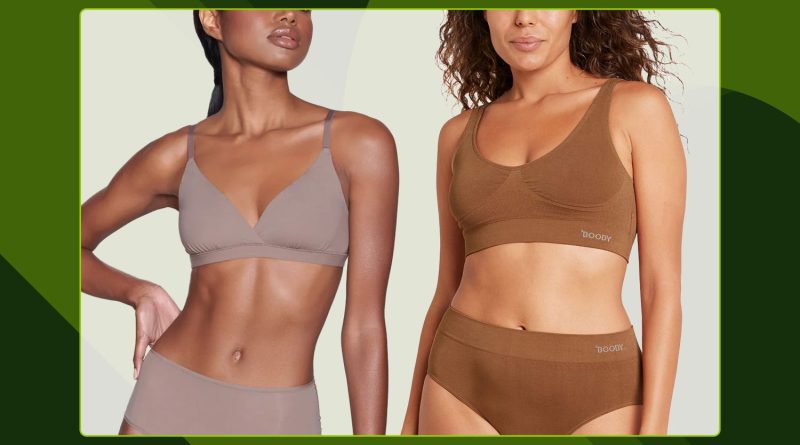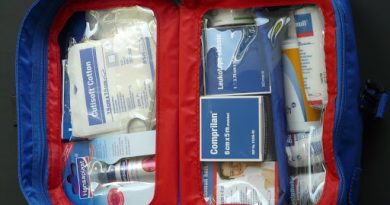How to Choose the Right Fabric for Moisture-Wicking Sports Bras
Your sports bra should fit snugly without feeling tight or constricting. It should also pass the no-wrinkles test.
Look for features like a racerback silhouette to minimize back movement, crisscross and adjustable straps to customize your fit and a zip-front closure for easy on/off. Look for a padded bra or encapsulation design to reduce bounce and strain for high-impact exercise.
Post Content
Cotton
Cotton is a popular fabric in everyday comfort and t-shirt bras, but it doesn’t offer the sweat-wicking benefits needed for moisture-wicking sports bras. Instead, it can make you feel damp and uncomfortable during your workout. In addition, it can harbor unwanted odors and bacteria, which can be irritating to sensitive skin.
Choosing the right sports bra is a personal choice for every woman, depending on their needs. The key is to find a comfortable fit compatible with your chosen exercise that won’t dig or restrict. Try on multiple sizes of a specific bra to assess how it feels on your body and in different workouts.
In the athletic bra world, many women struggle with the same problems as in their regular bras: straps that dig or pinch and band sizes that are too tight or loose compared to the bust support needed. With no universal terminology among brands to describe the level of support, this can be an overwhelming experience for most.
Fortunately, there are several ways to overcome these issues. A good option is to look for moisture-wicking fabric for sports bras that offer a flexible, comfortable fit. This means choosing a high-quality nylon or polyester blend incorporating spandex and elastane for the best stretch and body-molding support combination.
Lycra
If you’ve ever been shopping for a sports bra, you know that finding the right one can be challenging. Problems such as straps that dig and band sizes that are either too tight or too loose compared to the needed bust support often arise.
These issues can be minimized by choosing a moisture-wicking fabric. Unlike cotton and polyester, which can irritate sensitive skin, moisture-wicking materials such as nylon and acrylic are efficient in pulling sweat away from your body and drying it quickly once it evaporates.
Lycra is a type of synthetic fiber that’s used in many kinds of workout clothes. It’s most commonly found in waistbands, other stretchy undergarments, and the elastic thread of most socks. It has a very high flexible quality, which can be stretched up to eight times before it loses shape.
Athletes typically choose a fabric with a high percentage of Lycra to ensure that their clothing is comfortable, stretchy, and easily put on and removed. This is especially true in sports bras, where a snug fit is often desired to prevent chafing and other discomforts during exercise.
In addition to choosing the right size, you’ll also want to decide whether you prefer a compression or encapsulation sports bra style. In a compression bra, the breasts are pressed together, which helps to reduce movement and can be particularly helpful for larger busts.
Spandex
The right fabric helps wick away moisture, which can lead to chafing and discomfort during and after your sweaty workout. Moisture-wicking fabrics, like nylon and polyester, are highly effective for moving sweat away from the skin to dry quickly and reduce irritation. They’re often blended with spandex or elastane for body-molding stretch and a soft feel.
When shopping for a moisture-wicking sports bra, choose one that fits well and is made from high-quality materials. Look for seamless design and flat seaming, which extends the lifespan of your bra by limiting wear and tear on the seams.
In addition to a comfortable fit, it’s important to pick a bra with the appropriate level of support for your activity. This will keep your bust stable and prevent pain or injury. Generally, cups ranging from AA-B need low-support bras for activities such as yoga and barre. In contrast, C and D cup sizes can typically use medium-support sports bras for low- to moderate-intensity exercise.
This bra features a racerback and elasticized lining in the underband for support, similar to a standard bra, making it easier to put on and remove than compression styles. It also offers better encapsulation support for larger busts than compression-only options, which can smush your breasts together.
Polyester
Moisture-wicking sports bras move sweat away from the skin, allowing it to evaporate more quickly and reduce chafing, red marks and visible sweat patches. These sports bras are typically made from synthetic fabrics like polyester and nylon, which wick moisture and offer stretch to prevent chaffing.
The most important factor in choosing a fabric for a sports bra is the intensity of your workout. If you’re doing high-impact exercises such as running, mountain biking or aerobics, you’ll want more support to prevent excessive movement that can lead to pain and injury over time. You may only need a little help for low- and medium-impact exercises such as yojoggiless walking.
Padding and removable cups can be added to a sports bra for modesty or extra support for larger busts. These sports bras can be made from the same materials as regular bras, and they often feature clasps or hooks in the back and front to make them easy to put on and remove. Some padded sports bras have built-in cups called encapsulation bras, which can be easier to put on than compression or molded bras.
Many sports bras can be machine-washed on cold and air-dried to avoid shrinking. Some even incorporate ‘flat seaming,’ which helps to reduce the likelihood of stretched seams and prevents chafing. Washing your sports bras regularly is a good idea to keep them clean and fresh.




